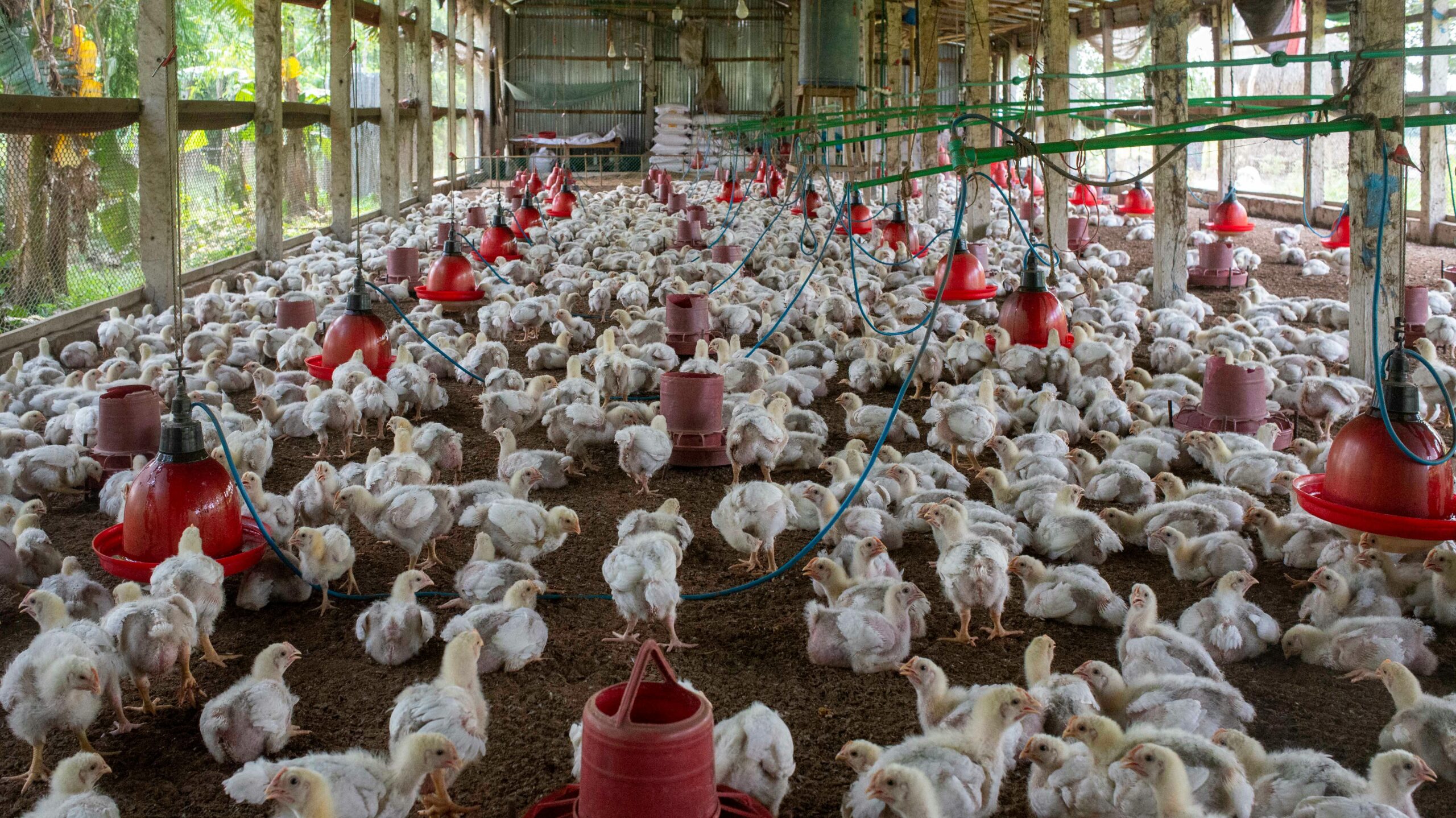Picture this: you’re scrolling through your feed, sipping your oat milk latte, and suddenly you stumble on a headline about yet another viral outbreak—cue the eye-roll. But what if I told you there’s an entire secret squad of scientists playing detective, stalking animal viruses before they even think about crashing our human party? From bats to pigs to that adorable shrew you spotted scurrying by your doorstep, there are microscopic troublemakers lurking everywhere, and these lab-coat-clad heroes are on a mission to keep them in check. Think of it like prepping for a blockbuster disaster movie—except the plot twist is real, and the stakes are higher than your anxiety before a big Zoom call. So lean in, because we’re about to introduce you to a dozen animal viruses that, right this very moment, are under the microscope—literally and figuratively—as scientists everywhere work overtime to make sure they stay where they belong: far, far away from us.
1. H5N1 Avian Influenza
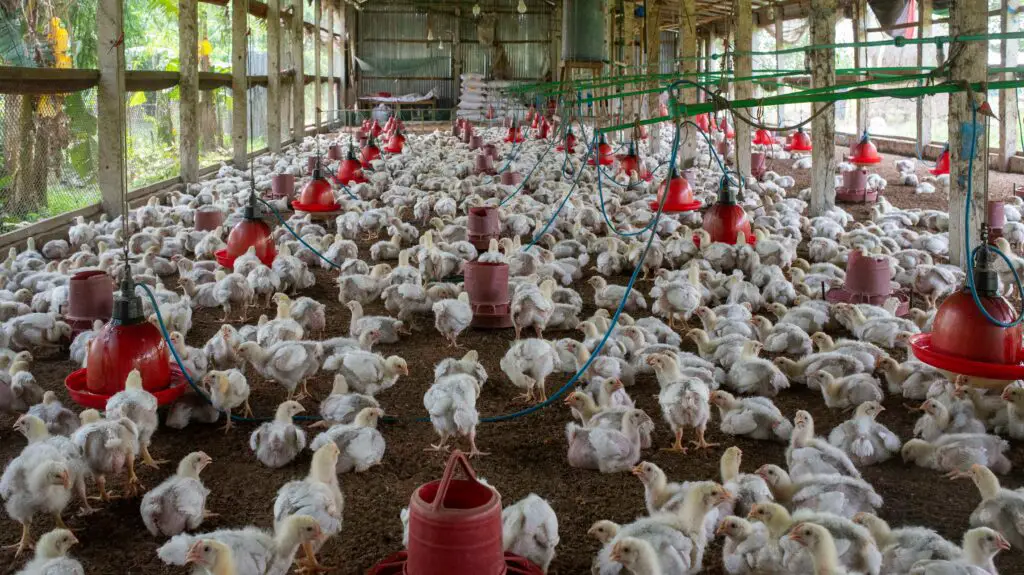
H5N1 avian influenza has been on scientists’ radars for years because it can leap from birds to mammals—and in rare cases, humans—potentially triggering a devastating outbreak. As noted by the Food and Agriculture Organization, H5N1 continues to circulate in wild birds and poultry across multiple continents, keeping researchers up at night. The virus has a knack for mutating, which means one day it might gain the ability to spread easily between humans, and no one wants a repeat of 1918. What’s especially wild is that healthy-looking migratory waterfowl can carry H5N1 without showing symptoms, acting like secret agents ferrying the virus to remote regions. Scientists are constantly sampling bird droppings, feathers, and even wastewater near farm operations just to catch H5N1 before it spreads.
Those who work in live poultry markets—where birds from different farms mingle—are under extra scrutiny because these markets are notorious “mixing bowls” for flu viruses. The reason H5N1 makes this list is simple: its high mortality rate in humans (around 50 percent in confirmed cases) is enough to make anyone rethink their weekend plans. Plus, if the virus acquires just a couple of genetic tweaks, the next flu pandemic could have a not-so-fun “avian theme.” Researchers are collaborating with international partners to develop next-generation vaccines and antiviral drugs, but those are still in trial phases. Beyond just lab coats and microscopes, field teams are also educating farmers on biosecurity measures—like separating different species of birds—to minimize spillover risks. In short, H5N1 might still be “just another bird flu,” but global health experts aren’t taking any chances.
2. Nipah Virus

If there’s anything that makes virologists practically vibrate with anxiety, it’s Nipah virus (NiV), which has caused repeated outbreaks in South and Southeast Asia since 1998. According to the World Health Organization, NiV is lurking in fruit bats and can jump into pigs or humans, often causing severe respiratory and neurological disease with mortality rates as high as 75 percent who.int. What makes Nipah particularly sinister is its ability for limited human-to-human transmission, meaning family caregivers and healthcare workers become front-line heroes and victims. Scientists track NiV by testing bat urine, saliva, and partially eaten fruit dropped in trees to gauge how many bats are shedding the virus. Researchers have also started installing infrared cameras around known bat roosts to catch the critters in action without disturbing them—a bit like a bat-themed wildlife documentary, but way more serious.
The reason to keep an eye on Nipah is twofold: one, its high case-fatality ratio, and two, its potential for respiratory spread, which is a game-changer compared to viruses that only cause fevers. Teams in Bangladesh have been studying how raw date palm sap collectors unconsciously create spillover opportunities by leaving open collection pots, basically offering NiV a free ride from bats to humans. Vaccine candidates are in preclinical trials, but they’re not exactly Insta-ready; developing safe, effective immunizations for NiV is like solving a Rubik’s Cube blindfolded. Public health workers conduct “live drills” in local villages to simulate outbreak scenarios—like disaster-prep for pandemics, but with more test tubes. This ongoing surveillance is as much about community education as it is about lab breakthroughs. If Nipah ever mutates to spread more efficiently between humans, having those local response plans fine-tuned could be the difference between a controlled scare and a full-blown emergency.
3. Crimean-Congo Hemorrhagic Fever Virus
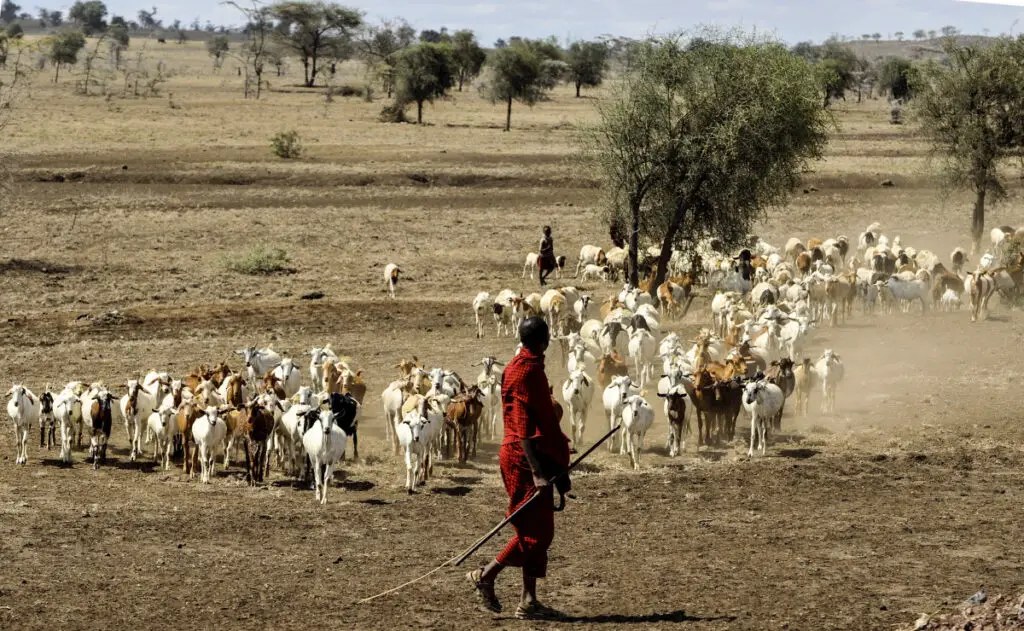
Crimean-Congo hemorrhagic fever virus (CCHFV) is essentially a tick-borne boogeyman that lurks in livestock and wildlife across parts of Africa, Europe, and Asia. The CDC notes that CCHFV can cause hemorrhagic fever outbreaks with case-fatality rates up to 40 percent, making it a top-tier concern. Researchers keep tabs on CCHFV by sampling ticks from livestock, wild mammals, and birds to map hotspots where the virus might jump into people. These hardy ticks—mostly from the Hyalomma genus—can survive extreme temperatures, prolonging the window of risk throughout spring and summer. What’s especially unnerving is that farmers, veterinarians, and abattoir workers can be exposed when handling infected animals or dying ticks, meaning rural communities face the brunt of this threat. Scientists often wear full-body protective suits when collecting ticks in the field, looking like characters from a sci-fi thriller, all to avoid a single tiny tick bite.
The reason CCHFV makes the cut is simple: it’s silent until it’s deadly, with early symptoms that mimic the flu before hemorrhaging sets in. No licensed vaccines exist for humans, so research teams are racing to develop antibody therapies and vaccines, albeit at a pace that feels more snail than rocket. Meanwhile, public health agencies push for community education—telling families to check livestock regularly, deploy tick control measures, and complete “household tick checks” after working in fields. Epidemiologists also run sentinel surveillance programs using sentinel animals (like goats) that get tested monthly to serve as early warning systems. Though spillover into humans is relatively rare, even one case can spark multiple rounds of transmission within clinics lacking proper isolation facilities. Constant genomic sequencing of CCHFV from ticks and patients helps scientists track viral evolution and anticipate whether new strains might become even deadlier.
4. Camp Hill Virus
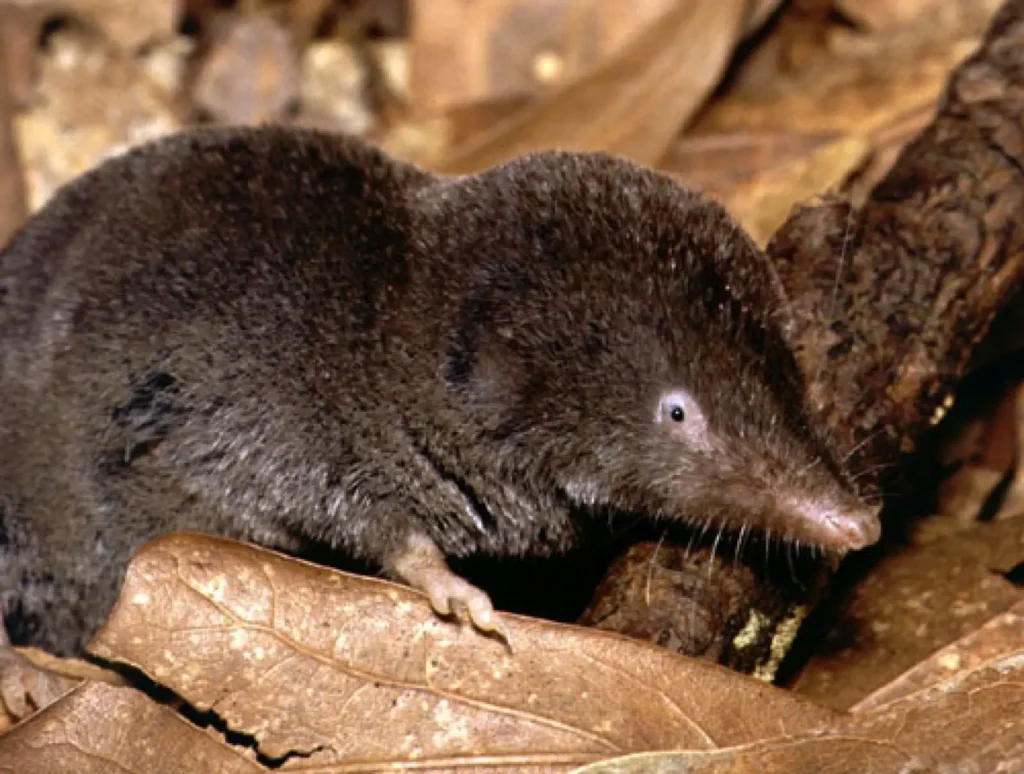
Camp Hill virus, a brand-new henipavirus discovered in shrews, is the kind of headline that makes every infectious disease scientist’s coffee go cold. Researchers from ContagionLive report that Camp Hill virus was identified in northern short-tailed shrews in Alabama, raising concerns that other henipaviruses—like Nipah and Hendra—could be lurking in similar critter reservoirs unknown to science. What’s wild is that shrews are small and unassuming, but they might harbor viruses with the potential to infect humans if the right circumstances arise. Scientists are now systematically trapping shrews and other small mammals in various regions to test for Camp Hill and related henipaviruses, conducting genetic sequencing to see how closely these viruses resemble deadly cousins.
The reason Camp Hill deserves attention is that it highlights how many potential threats are out there, hidden in plain sight, waiting for an unsuspecting spillover. Teams use mobile labs to process samples on-site, trying to cut down the delay between trapping an animal and identifying a novel virus from weeks to days. The discovery has prompted a rethink of traditional surveillance, broadening it beyond bats (the usual suspects) to include insectivores and rodents. That’s like expanding the search party in “Whodunit?” from just the butler to every character in the mansion. Funding bodies are now more inclined to support “discovery science”—research that intentionally looks for new viruses—because reactive strategies alone can be too little, too late. Ultimately, the inclusion of Camp Hill virus in monitoring programs is a wake-up call: as human habitats expand, our overlap with wildlife reservoirs increases, and so does our exposure. Scientists stress that if we want to prevent future spillovers, we need to map the entire “virosphere” before any new henipavirus can get cozy in the human population.
5. Swine Acute Diarrhea Syndrome Coronavirus (SADS-CoV)

Swine acute diarrhea syndrome coronavirus (SADS-CoV) may sound like a farm problem, but it has serious human health implications because it’s related to bat coronaviruses and has caused high mortality in . In a study published in the Proceedings of the National Academy of Sciences, researchers showed that SADS-CoV has a broad host range and can infect human cell lines in the lab, suggesting a potential for human spillover. The virus first emerged in Guangdong, China, in 2017, wiping out tens of thousands of piglets and putting economic and food security at risk. Scientists are now monitoring both pig farms and surrounding bat populations to detect SADS-CoV before it crosses species barriers. The reason to watch SADS-CoV is not just the pork industry’s bottom line but also the potential for a coronavirus to spark another pandemic—remember, the original SARS-CoV-1 also came from bats via an intermediate host. Field teams deploy portable PCR machines to test piglets showing diarrhea, while bat ecologists collect fecal and oral swabs from cave-dwelling horseshoe bats.
Research groups are also developing serological assays to check if farmworkers have ever been exposed, which would be the ultimate yellow flag for human vulnerability. Beyond lab work, scientists run simulation drills with veterinary networks, ensuring rapid culling and quarantining protocols are ready to go if a suspected case appears. Vaccine development for SADS-CoV is underway, but it’s early days, and creating a safe, effective vaccine in live animals is always tricky—especially when dealing with coronaviruses that can mutate. Even if SADS-CoV never sees a major human outbreak, tracking it helps improve our broader coronavirus surveillance infrastructure, making us more resilient to future threats. That’s why SADS-CoV is on the radar: it’s a reminder that labs, farms, and forests are interconnected in ways that can’t be ignored.
6. Hendra Virus
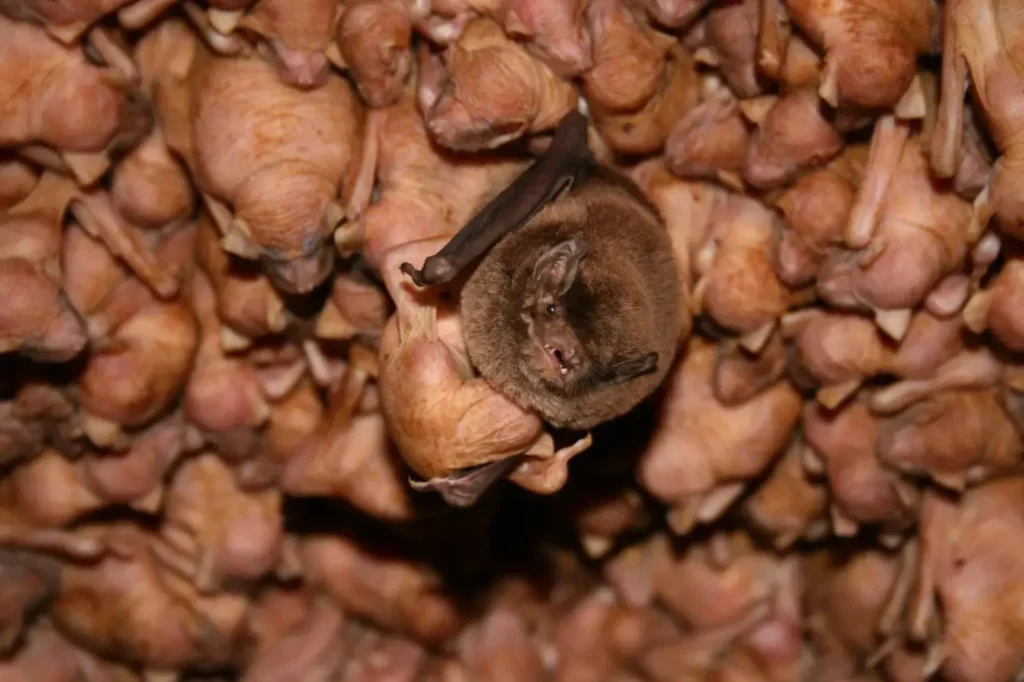
Hendra virus is basically the Batman of the virus world—dark, elusive, and swooping down from fruit bats in Australia when you least expect it. Scientists are glued to their microscopes because Hendra can jump from bats to horses and then, occasionally, to humans, causing freakishly severe respiratory and neurological symptoms. It’s like a twisted game of viral hot potato where the bat throws to the horse, and the horse might toss it to a human motorbike mechanic—talk about unexpected career hazards. Researchers collar bats with GPS trackers to figure out migration patterns, so they can predict when Hendra has a better shot at infecting local horses. Veterinarians in Queensland and New South Wales aren’t just giving horses hugs—they’re suiting up in full protective gear anytime they see neurological signs, waving away the typical “horses are high maintenance” complaints.
The reason scientists monitor Hendra is that if one spillover event goes unnoticed, it could cascade into a bigger public health nightmare, especially given Australia’s love of all things outdoor and equestrian. There’s also a vaccine for horses, but uptake isn’t perfect, so every unvaccinated stable is a potential flashing red warning light. Field teams regularly collect blood and nasal swabs from horses, looking for antibodies or viral RNA, and if they find anything sketchy, biosecurity protocols kick in faster than you can say “viral containment.” On the human front, doctors are primed to isolate any fever-plus-flu-symptoms cases that have horse exposure, because early detection is literally lifesaving. Even though only a handful of human cases have been recorded, the mortality rate is high enough to keep infectious disease folks caffeinated for months on end. Hendra’s inclusion on this list is a reminder: horses aren’t just decorative lawn ornaments—they can be stealth carriers for viruses that could leap into people.
7. Reston Ebolavirus
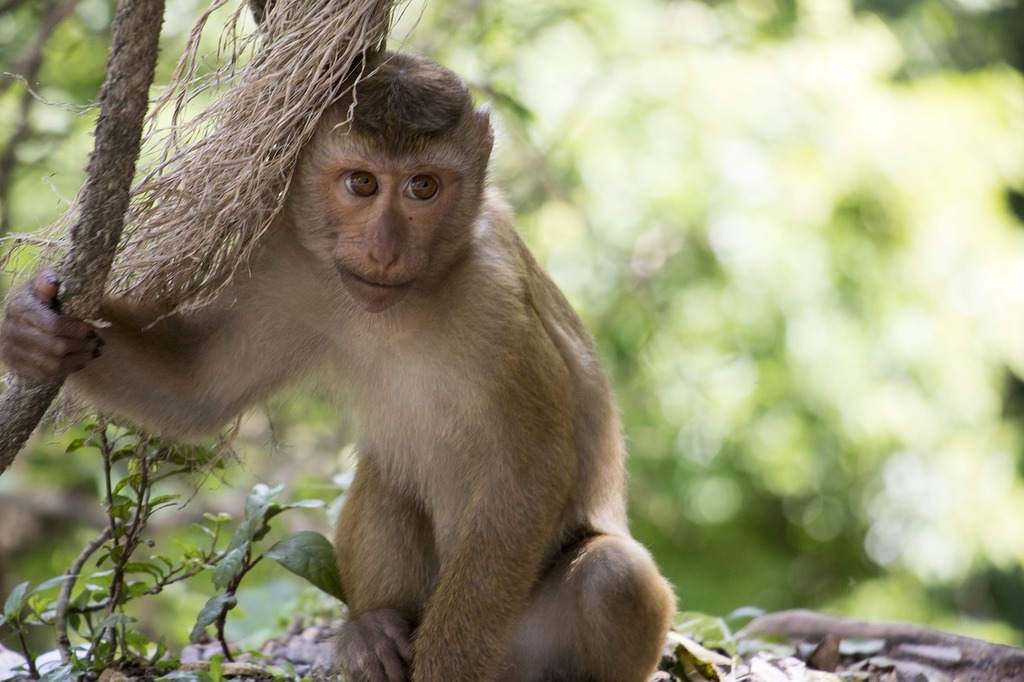
Reston ebolavirus sounds like it should be a VIP lounge in some trendy club, but it’s a filovirus that happily infects monkeys and pigs in parts of Asia. Scientists got a rude wake-up call in 1989 when Reston was detected in imported macaques in the U.S., reminding everyone that a deadly pathogen could hitch a ride on a cargo jet. The weird part? While Reston can make monkeys very sick, it doesn’t appear to cause disease in humans—so far, anyway—leaving researchers wondering if it’s just biding its time before evolving that missing ingredient to spark human illness. Surveillance programs track Reston by sampling pig farms in the Philippines and testing any monkeys that end up in research labs, because who knows when a mutation will give Reston the ability to cause the kind of hemorrhagic fever that its African cousins do.
Virologists in biosafety level 4 labs run continuous experiments to see if Reston can adapt to human cell lines, and if it does, alarm bells will go off worldwide. The reason for keeping a close eye on Reston is the slippery slope of viral evolution—a small tweak in its genome could take it from “harmless to humans” to “serious global problem.” Field teams also collect bat samples, given that fruit bats are suspected reservoirs, to understand the virus’s natural reservoir dynamics. Data from these studies inform policies on live animal trade, lab safety protocols, and even traveler advisories, making sure the rest of us stay blissfully unaware until there’s no choice. Researchers also cross-check Reston’s genetic code against known Ebola strains, hunting for signs of recombination events. While Reston hasn’t yet jumped to people, its presence in multiple animal hosts and its filovirus family pedigree make it a ticking time bomb in some experts’ minds. Monitoring Reston is part precautionary principle, part scientific curiosity—basically, “We’ll be damned if we let a few nucleotide changes kill us all.”
8. Rift Valley Fever Virus

Rift Valley fever virus (RVFV) is like that uninvited guest at any East African livestock festival—arriving via infected mosquitoes to wreak havoc on sheep, goats, cattle, and sometimes humans. Researchers track RVFV by setting up chicken coops near flood-prone pastures because chickens act like tiny, unpaid mosquito surveillance agents, showing up dead if RVFV-infected mosquitoes are buzzing around. For scientists, watching those chicken fatalities raise red flags faster than your phone’s low-battery alert. The reason RVFV makes this list is its dual threat: it can annihilate herds, upend local economies, and also infect humans, leading to hemorrhagic fever, encephalitis, or vision loss. Epidemiologists keep tabs on rainfall and temperature data because RVFV loves wet, warm seasons—mosquitoes breed like crazy then, turning villages into viral Las Vegases.
Vaccination campaigns for livestock exist, but they aren’t foolproof; limited cold chain infrastructure means some vaccines go bad before they reach remote farms. So field teams race to immunize pregnant ewes before lambing season, trying to block RVFV’s relentless spread. On the human health side, doctors receive specialized training to identify early symptoms like sudden fever and severe headaches, because early supportive care can prevent deadly complications. Lab researchers are also developing rapid antigen tests that can be deployed in rural clinics—no more waiting for lab results to confirm you’re dealing with RVFV. Plus, with climate change shifting mosquito habitats, RVFV is creeping into new territories, prompting scientists to expand surveillance from just East Africa to parts of the Middle East and even southern Europe. That’s why RVFV stays on the radar—it’s an agricultural and public health fuse that could ignite at any moment, especially if global travel gives it a free ride.
9. Kyasanur Forest Disease Virus
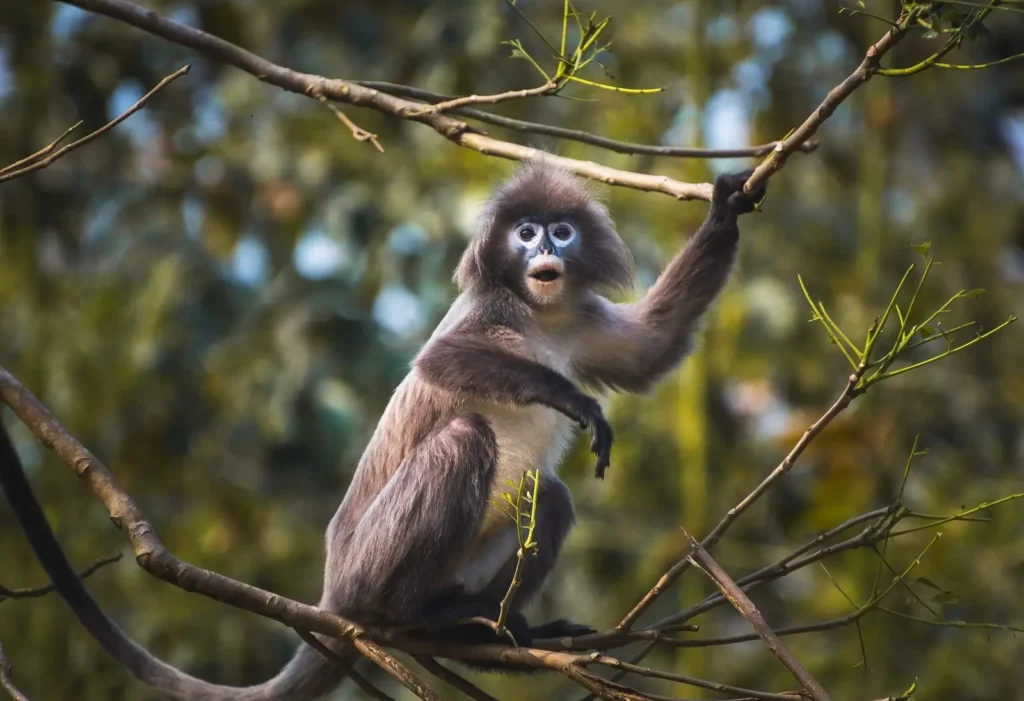
Kyasanur Forest disease virus (KFDV)—or “monkey fever,” if you want the cliched name—hangs out in tropical evergreen forests of India, transmitted by ticks that feed on monkeys, rodents, and sometimes humans. Scientists scout forested areas wearing tick-proof suits like something out of a post-apocalyptic fashion show, dragging white cloth over vegetation to collect ticks for testing. They’re trying to nail the precise tick-host-virus interface so locals can avoid those cursed “red-hot” spots when trekking or harvesting firewood. The reason KFDV makes this list is twofold: it kills about 3–5 percent of known human cases, and it’s expanding beyond its traditional hotspots into new districts, thanks to deforestation and wildlife encroachment.
Researchers are mapping KFDV prevalence using GIS technology, overlaying livestock grazing routes, monkey migration patterns, and human movement data to predict fresh outbreak zones. Public health teams run “vaccination drives” in villages at the forest’s edge, but the vaccine requires multiple doses and annual boosters—basically, a marathon rather than a sprint. Meanwhile, wildlife ecologists conduct serosurveys on monkeys because primates often die quickly if infected, serving as early warning canaries in the COVID-era coal mine. The field data helps authorities issue “tick alert” advisories, telling people to wear long-sleeved shirts, use repellents, and avoid forested areas during peak tick season. Studies also focus on genetic sequencing of KFDV to check if there are new strains brewing that could be even more virulent. Since human cases mostly occur between December and May, local clinics ramp up diagnostic testing capacity ahead of that window. KFDV’s inclusion underscores the point that when you mess with forest ecosystems, you risk unleashing viruses that were previously locked in wildlife reservoirs—no matter how idyllic that forest trek looks on Instagram.
10. Bourbon Virus

Bourbon virus is like the creepy cousin no one wants to talk about—originally discovered in Kansas in 2014, this thogotovirus has only a handful of confirmed human cases, but its mystery keeps virologists itching to find answers. It gets its name from Bourbon County, Kansas, where the first known fatal case occurred after a tick bite, leading to fever, rash, and a rapid plummet in platelet counts. The weird thing is that Bourbon virus doesn’t fit neatly into any known tick-borne virus family, making scientists scratch their heads and reach for the electron microscope. Researchers collect ticks from wildlife and livestock in the Midwest and Southeast U.S., testing them for Bourbon viral RNA to determine geographic spread and tick species involvement.
Why track Bourbon? Because just a few cases don’t mean “no risk”—it suggests a gap in our knowledge of tick-borne pathogens circulating under the radar. Public health agencies have started alerting doctors to consider Bourbon virus when patients present with unexplained febrile illness and tick exposure, so diagnostic tests are now more likely to detect it. Lab teams are also working on serological surveys to check if people living in wooded, tick-infested areas have antibodies, indicating they were exposed without realizing it. Field ecologists tag and test small mammals like rabbits and deer, since any mammal could be a reservoir, amplifying Bourbon virus in the environment. Vaccine development is lightyears behind because of the virus’s rarity, so prevention relies heavily on tick bite avoidance—think permethrin-treated clothing and daily tick checks, the ultimate adult version of “Did you brush your teeth?” Bourbon virus’s inclusion here is basically a PSA: just because a virus seems rare doesn’t mean it can’t go rogue if conditions shift.
11. Powassan Virus
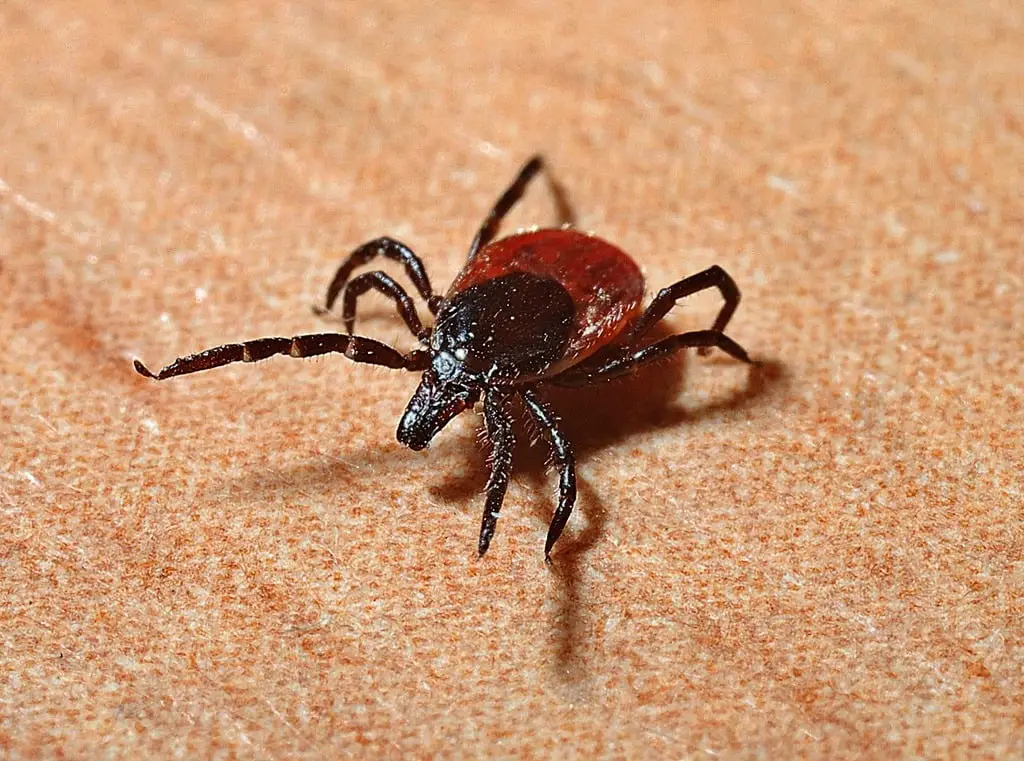
Powassan virus is that stealthy, tick-borne threat in North America that’s rarer than Lyme disease but roughly ten times more likely to cause severe neurological problems. Doctors in the Great Lakes and Northeastern U.S. are so keyed in that any patient with unexplained encephalitis gets tested for Powassan, because if you delay diagnosis, you risk permanent neurological damage or worse. You can’t just treat Powassan with a Band-Aid and ibuprofen; infections can progress to life-threatening encephalitis within days, turning a “simple” tick bite into a nightmare.
Scientists crunch data from tick drags, wildlife serosurveys, and even roadside mosquito traps (yes, mosquitoes sometimes pick up Powassan when feeding on infected rodents) to understand its ecology. The reason Powassan is on the radar is that with warming temperatures, tick populations are exploding and marching further north, turning previously safe vacation spots into possible viral hotspots. Public health campaigns now promote “tick awareness months” with catchy slogans like “Check for ticks, not your DMs,” encouraging hikers to dance like they’re swatting tics off a tantrum. Researchers are also sequencing Powassan strains to see if genetic shifts could make it even more transmissible or lethal—and that’s the stuff of virology nightmares.
12. African Swine Fever Virus
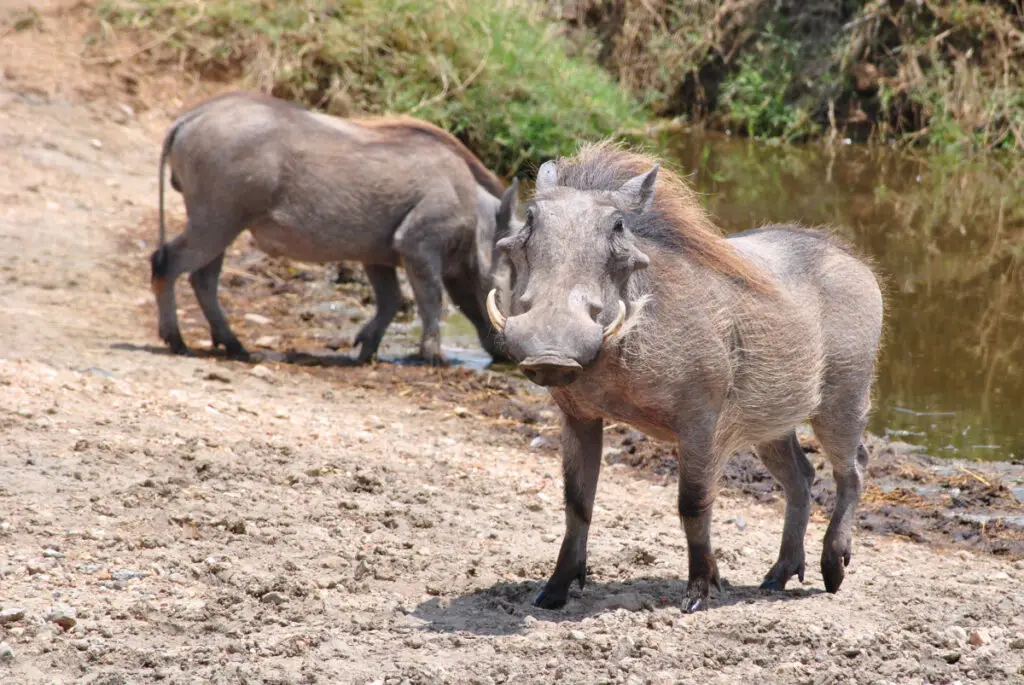
African swine fever virus (ASFV) is the viral equivalent of a meteor hitting the global pork supply—devastating to domestic and wild pigs, with mortality rates that can top 90 percent. While ASFV doesn’t infect humans, its economic and food security ramifications ripple across continents, making it a high-priority virus to watch. Researchers in China, Europe, and Africa set up “sentinel farms” to test pigs regularly for ASFV, so they can catch outbreaks before they spread across provincial borders or jump into new countries. The reason ASFV sits on this list is that once it enters a region, eradicating it is next to impossible without culling millions of pigs—a scenario akin to a dystopian “Hunger Games” for pork producers. Scientists also monitor wild boar populations by collecting blood samples and tissue from boar carcasses, because wild boars can carry ASFV like smugglers carry contraband—silently fueling new outbreaks.
On the lab side, teams are developing rapid point-of-care PCR tests so field vets can confirm infection in as little as an hour, preventing delayed responses that could doom entire herds. Vaccine research is in overdrive, but the ASFV genome is so complex that creating an effective, safe vaccine remains a formidable challenge—like trying to solve a 10,000-piece jigsaw puzzle in the dark. Epidemiologists track commercial feed imports and swill-feeding practices, since contaminated pork products can introduce ASFV to naïve pig populations thousands of miles away. University extension programs work with smallholder farmers, teaching them biosecurity basics—like disinfecting boots, controlling wild pig access, and disposing of carcasses properly—to keep ASFV at bay.

